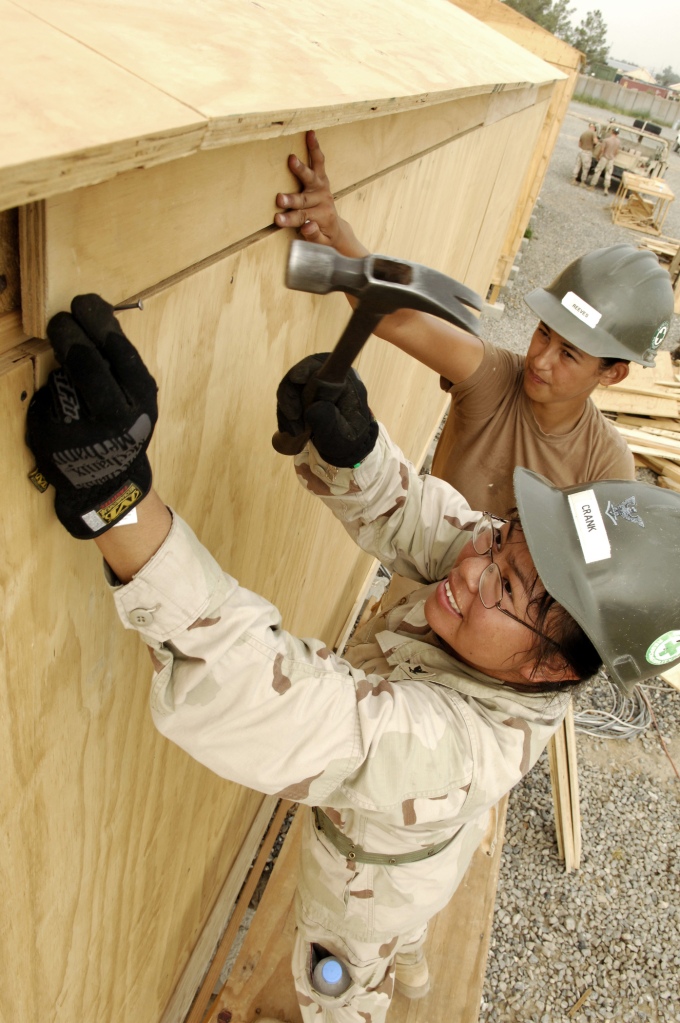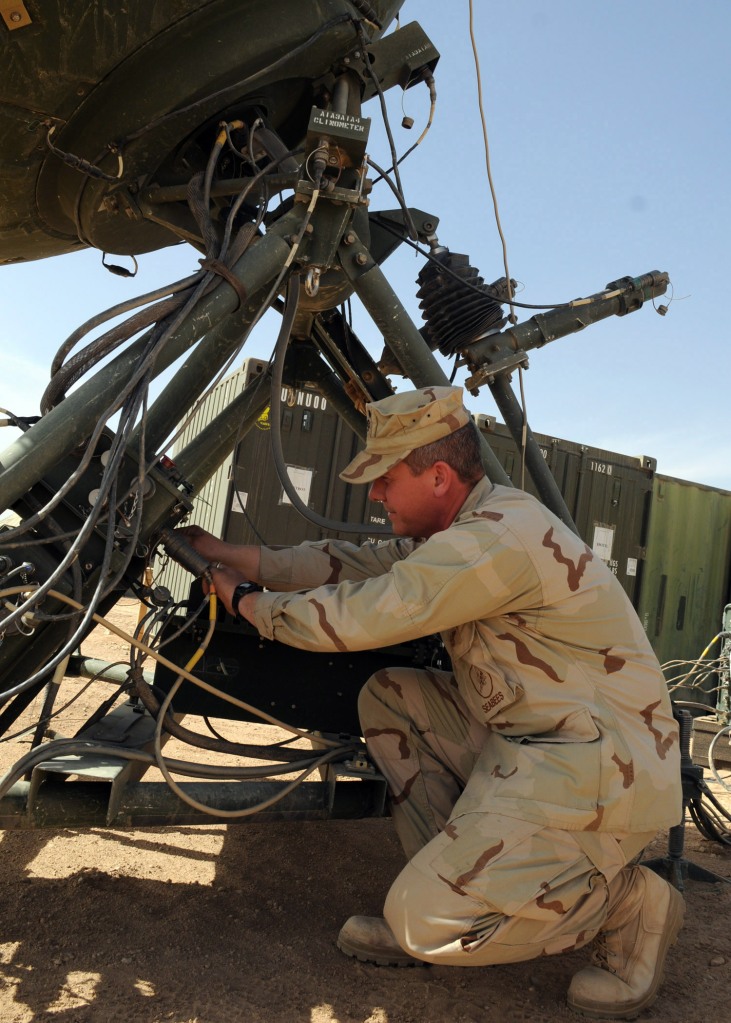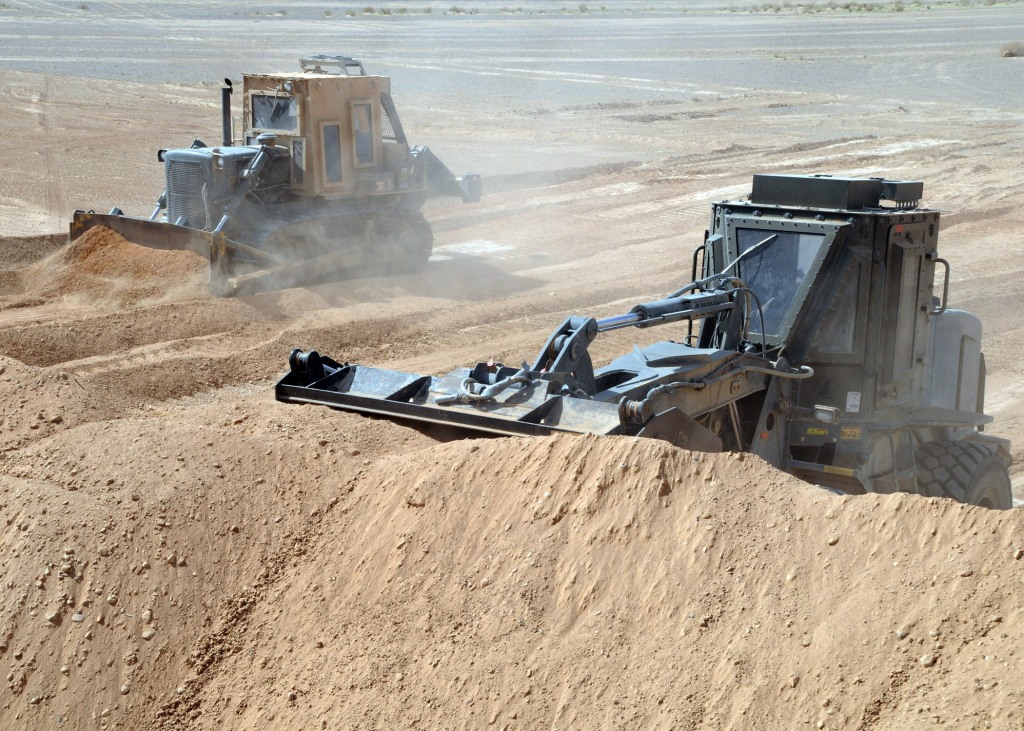By CAPT Jim Schroeder, CEC, USN (ret.), former Commander, First Naval Construction Regiment

The First Naval Construction Regiment (1st NCR) deployed to Al Anbar Province in August 2008 to provide engineering command and control in support of I Marine Expeditionary Force (Forward) (I MEF FWD) and Multi-National Forces West (MNF-W). The regiment had begun preparations to deploy in the fall of 2007 building a robust training and certification schedule and working with Naval Construction Force and Navy Reserve Staff to fill empty billets and required staff augments for the deployment. Training started in earnest in early March with the regiment participating in Exercise Key Resolve and conducting follow on command post exercises. The regiment mobilized in June to Naval Base Ventura County Port Hueneme to complete training and certify the unit for deployment. One of the major focus areas post-mobilization was integrating the newly assigned staff into the regiment and providing them with training for their new assignments.
Arriving in Al Anbar Province, 1st NCR relieved the 22nd NCR and with Naval Mobile Construction Battalion (NMCB) 7, NMCB-27, 7th Marine Engineer Support Battalion (7th ESB), and the 341st Army Engineer Company began providing general construction support and convoy security across Al Anbar Province in early September 2008. During my initial office call with Major General John Kelly, Commander, MNF-W, he set the stage to reduce engineer force structure at the end of 1 NCR’s deployment.
Working with MNF-W’s Engineer Staff, we began to reduce the demand signal for troop engineer construction efforts while supporting base consolidation efforts, focusing our efforts on consolidating Class IV equipment and materiel, and redeploying excess equipment to Kuwait. During the initial months in Iraq, MNF-W notified Combined Joint Task Force Iraq (CJTF-Iraq) that the regiment’s mission was complete and reduced future requirements for engineer battalions. Almost immediately, Multi-National Force Iraq (MNF-Iraq) began planning to redeploy the unit to support other missions within Iraq.

As planning for the surge in Southern Afghanistan was developing, there was a shortfall of engineer forces to prepare for the incoming combat forces. In early November, we were notified of a potential mission to redeploy the regiment and one of our battalions to Southern Afghanistan and we began some initial planning efforts.
In late November, the 1st NCR and NMCB-7 received orders to redeploy to Southern Afghanistan and we began preparations in earnest. The regiment immediately focused our efforts on shifting NMCB-7’s ongoing construction projects to other units, the transition of C2 for NMCB-27, 7th ESB, and the 341st Engineer Company, transfer of our Al Taqqadum Class IV storage yard to the Army, and preparing equipment for shipment from Iraq to Afghanistan. For many of our 1st NCR staff, redeploying and moving to a new theater was a new experience that they were not accustomed to.


In early December key staff members from 1st NCR and NMCB 7 conducted a site visit to Kandahar and Bastion, Afghanistan, the new sites for each unit. Everyone quickly realized that our efforts in Afghanistan would be very different from Iraq. In Kandahar, while an established base, there was no prepared spaces for the 1st NCR and other early arriving Command and Control (C2) elements. At Bastion, NMCB-7 would begin building a new base for the Marines and would be arriving at an existing British Airbase. Both units left a small advance party in place at Kandahar and Bastion to prepare for the unit’s arrival, establish logistics networks, and begin construction planning.
First flights of equipment began around Christmas 2008, to Bastion and Kandahar. Our embark staffs planned and executed an airlift and sealift of equipment. Many of the pieces of equipment had been armored in theater and our embark staff had to acquire new air transport certifications; some pieces were too large for even C-17 aircraft. From late December 2008 through January 2009, over 110 flights of our equipment left Iraq for Afghanistan on C-17 and chartered aircraft for our oversize equipment.
Our new C2 environment in Afghanistan was more complicated and challenging than our reporting relationship with the Marines and MNF-W in Iraq. The battlespace was controlled by Regional Command (RC) South, a NATO command and required coordination with them for force laydown, support, and movement. Funding, C2, and US authorities came via USFOR-A, the 101st Airborne Division, and their assigned Engineer Brigade.
The regiment’s tasks changed with our arrival in Kandahar. The staff had to quickly learn new processes, build a new logistic network, and develop relations with NATO and Army forces to support the rapidly emerging requirements. We continued to direct work for our assigned engineer forces which now included NMCB-7, a detachment from NMCB-4, and an Air Force RED Horse Expeditionary Group. As NMCB-7 arrived, they were immediately put to work building “Camp Leatherneck” next to Bastion. NMCB-4’s detachment and the RED Horse Group were providing construction support at Kandahar.

Our primary mission was the detailed planning and follow-on construction for new and expanded bases in Southern Afghanistan and we were supported in this effort by an Army Facility Engineering Team. The regiment worked closely with an Army Task Force planning for the reception, staging, and onward integration and bed down of combat forces to identify requirements for the planned force structure and required completion dates. The regiment staff identified project requirements, developed detailed scopes of work and cost estimates, determined project execution methods (contract or troop construction), and facilitated project approval and funding through USFOR-A’s Joint Facility Utilization Board Process.
In late February 2009, we turned over engineer responsibilities in Southern Afghanistan to the 25th NCR. Major General Ken Dowd, CENTCOM’s J4 (Director of Logistics) noted as we left theater.
“Hoorah Superb response to call for lift & shift from OIF to OEF. Resounding success in moving personnel and equipment to meet emerging requirements. Outstanding leadership at every level. Providing mission critical life support for our airmen, soldiers, sailors and marines are the foundation upon which our Afghanistan success depends. “
*******************************************************************************
Captain Jim Schroeder served as Commander, First Naval Constuction Regiment, the command element that executed the Lift & Shift from Iraq to Afghanistan from late 2008 to early 2009.